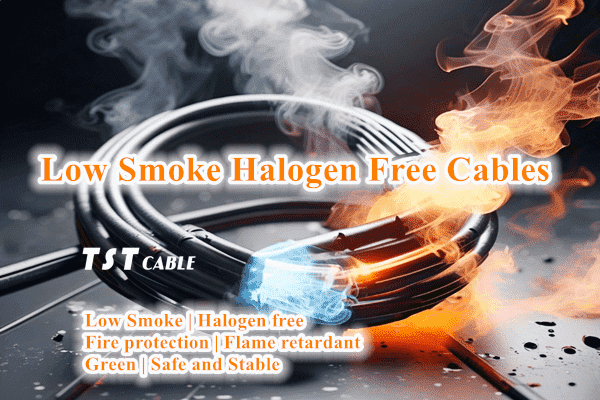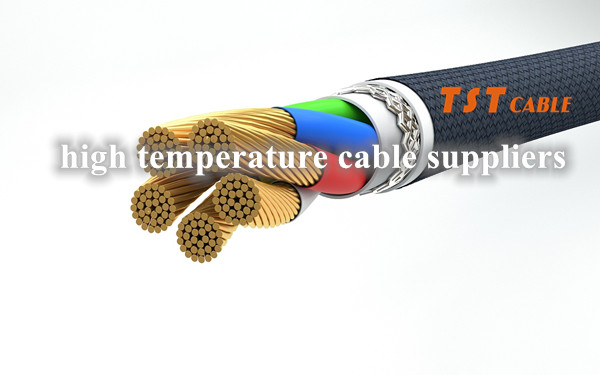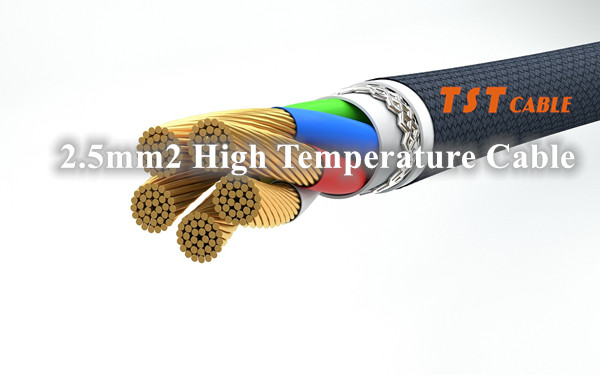Rubber cable is usually 5 types of copper conductors as a conductive core, in its production process, it is often found that the copper conductor oxidation discoloration, which also seriously affects the quality of the product itself, but also become the world’s many cable manufacturers of a very difficult to deal with the technical problems. tst cables technical engineers to solve the problem of oxidation of the conductor, summed up the following 8 key steps need to pay attention to.
Copper itself is a transition metal, easily oxidized by oxygen in the air under acidic conditions into black CuO. When there is a water film or water beads on the surface of the copper conductor, due to the atmosphere contains a large number of dust, such as smoke, coal, automobile exhaust, chlorides, as well as other acids, alkalis, salts and other particles of dust and so on, these harmful substances are dissolved in the water film on the surface of the copper conductor or in the water beads, which can form an electrolyte, thus exacerbating the problem of copper conductor oxidation. Electrolyte, thus exacerbating the oxidative discoloration of copper conductors. Light will affect the appearance of the product and product quality, heavy will directly affect the use of copper conductors, resulting in a waste of production costs. Therefore, the copper conductor must be properly stored, pay close attention to the prevention of oxidative discoloration of rubber cables.
Wire and cable products used in the metal copper from the principle that there are mainly physical methods to block the copper conductor itself and humid air contact, cathodic protection redox method to prevent the oxidation of copper conductor rubber cables, chemical methods are generated on the surface of the copper conductor passivation film to prevent the oxidation of the role of the conductor, or in the surface of the conductor sprayed with a special liquid to play a protective role. We take the general rubber cable production process as an example, take a look at each process has how the main methods of anti-oxidation control.
1, copper rod into the factory before transportation, testing processes and storage methodsMost of the cable companies in China with copper as purchased, you should choose the excellent quality of the metal copper rod, standardize the supplier’s transportation, delivery processes and systems, copper rod into the factory inspection is in accordance with GB/T 3048.2 or cable enterprise standards to be strictly enforced. Copper rod storage can be used plastic sheeting or plastic film to fully cover the copper rod, which is the simplest physical barrier method to prevent the copper rod and humid air contact each other. Workshop to lead the copper rod must be one by one will be the copper rod rolls for visual inspection to see if there is a black phenomenon, from the source of production to strictly control.
2, copper rod drawing process control0.4mm specifications of the monofilament drawing system generally need to use continuous annealing of copper large pulling machine and in the pulling machine, roughly need to be put through the line, drawing and annealing, cooling, drying, wire and other various processes. First of all, you should choose the right mold, remember not too small, otherwise it will be forced to make the crystal lattice of the copper metal to produce variation, exacerbating the rise in the temperature of the metal. Secondly, before starting the machine, we should check the pH of the emulsion to ensure that it is an alkaline solution, while drawing oil should be added to the antioxidant, which can form a passivation film on the surface of the copper conductor to prevent oxidation; when the wire is released, to maintain the tension of the wire release is stable and uniform, not excessive trembling; the operator should ensure that the wire-drawing process should ensure that the proper height of the water level to ensure that the degree of uniformity of annealing to avoid insufficient annealing or this annealing excessive Situation occurs; the closing time, the surface of the copper conductor should not have residual liquid, can be placed in front of the closing of a piece of dry felt (remember to replace often), to ensure that the monofilament is dry. Finally, after pulling the wire under the plate using transparent plastic film sealing, stored in a dry environment, waiting for the flow, otherwise it will occur due to the high temperature of the conductor surface and the risk of oxidation with the humid air.
3, copper wire stranding (bunching) and insulation rubber, sheath rubber extrusion processStranding of copper wire as an example, copper conductor in the stranding process, after the various channels of pressure mold so that the structure of the copper metal lattice changes, under the action of the strong external forces, after the mold after the temperature of the copper conductor over the mold before there will be a greater increase in the outer layer of the copper conductor oxidation occurs very easily. Therefore, in the process of stranding and liquid hose will be antioxidant (0.3% benzotriazole alcohol solution) drops into the copper wire, drops into the standard is just to moisten the surface of the copper wire shall prevail, to avoid dropping into the existence of too little local oxidation or dropping into the phenomenon of too much waste, in all the work of oxidation ready to stabilize the operation of the power again. Wires should be ensured at the take-up reel dry, take-up reel full, use transparent plastic film sealing.
Conductors should be wrapped longitudinally or this wrapped polyester tape before extruding insulation to prevent the substances in the rubber insulation from corroding the conductor. Insulating rubber and sheath rubber in the process of extrusion, should be properly avoided wire into the water, so that the phenomenon of oxidized black wire.
4, control of environmental humidity and temperature factorsHumidity control: humid environments tend to promote oxidation of copper conductors, especially at high temperatures. Therefore, the environment around the cable should be kept dry and the humidity should be reduced to minimize the possibility of oxidation.
Temperature management: High temperature accelerates the oxidation reaction and leads to the formation of an oxide film on the copper surface. Exposure of copper conductors to high temperatures should be avoided as much as possible, or measures should be taken to reduce the ambient temperature.
5、Material selection and processingSelection of high-purity copper: low purity copper is more likely to oxidize, so select high-purity copper production conductor can effectively slow down the oxidation rate.
Surface treatment: the copper surface treatment, such as mechanical deoxidation, pickling decontamination, etc., can remove surface oxides and dirt, reduce the degree of preliminary oxidation. At the same time, you can also use polishing, plating and other surface treatment techniques to improve the oxidation resistance of copper conductors.
6、 Coating and paint protectionUse of antioxidant coatings: common coating materials on the market, such as organic coatings, polyurethane coatings, phenolic coatings, etc., can be firmly adhered to the surface of the copper to form a protective film, preventing the erosion and oxidation of oxygen and water vapor on the copper material.
Paint protection: Coating a layer of paint on the surface of copper conductor can also play a role in isolating air and moisture, thus slowing down the oxidation process.
7, sealing and packagingThe use of sealing devices: conductor joints are susceptible to oxidation, so the use of appropriate sealing devices to protect the joints from air, moisture and other erosion.
Packaging protection: in the production, transportation and storage process, you can use transparent plastic film and other materials to seal the copper conductor packaging, in order to prevent its contact with moist air and oxidation.
8, regular inspection and maintenanceRegular inspection: regular inspection of the cable copper conductor, timely detection and treatment of problems, you can prevent and avoid conductor failure in advance.
Maintenance: For the cable copper conductor that has been installed and used, regular maintenance should be carried out, such as cleaning the surface dirt, check the sealing device, etc., in order to maintain its good working condition.
TST CABLES is one of the leading manufacturers of high temperature cables, rubber cables in the world, our factory is located in Shenzhen over 10,000 square meters, the quality of our products is highly guaranteed. Our workshop is equipped with advanced machines and testing equipment, and our senior engineers have more than 30 years of experience in cable research and development. We strictly follow international standards and customers’ requirements, our cable products comply with UL; UL, CSA; VDE; CCC; IATF 16949; ISO 9001; ISO 14001 ROHS, REACH certification standards. If you still have questions about copper conductor oxidation or have high temperature cable, low temperature cable purchasing needs, please feel free to email and communicate with our senior engineers.
Also available in:
English





